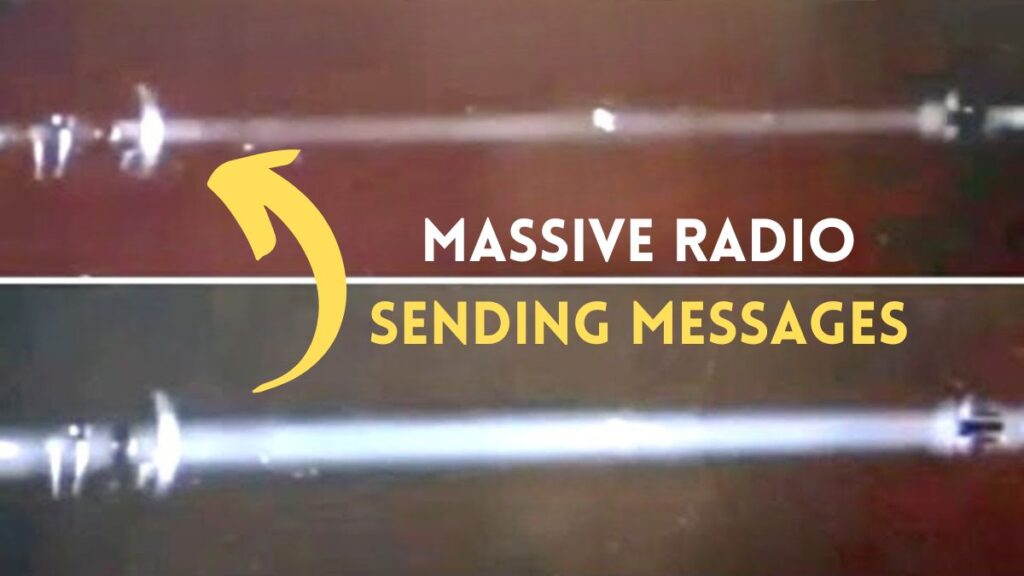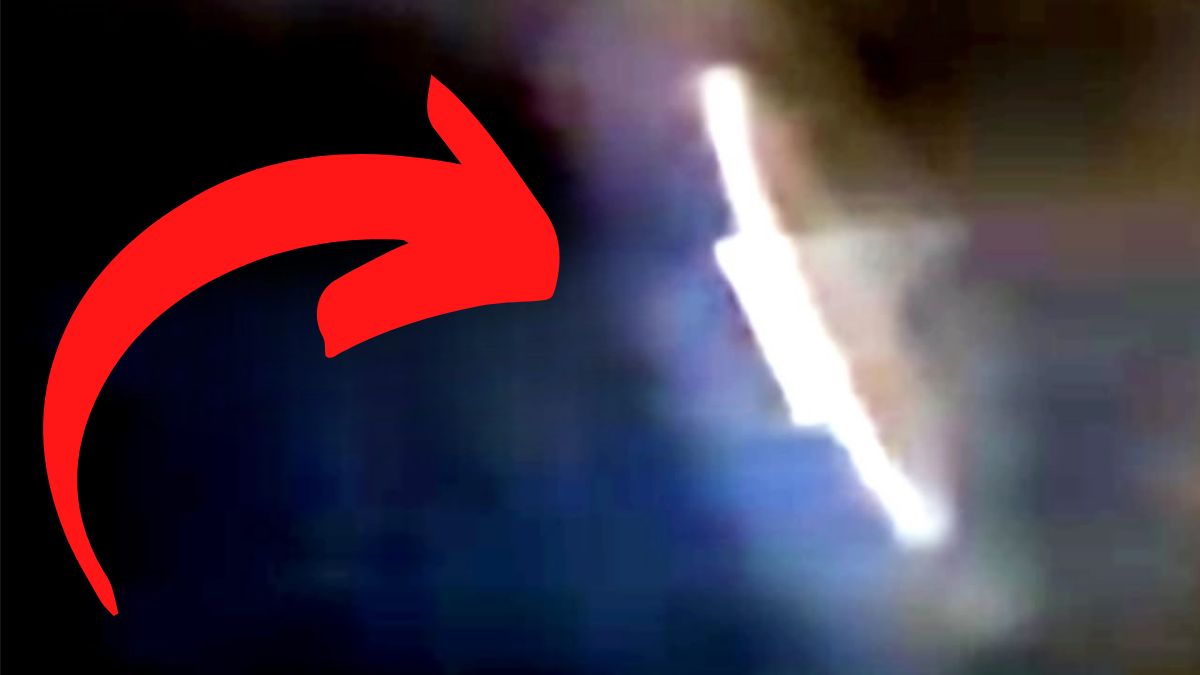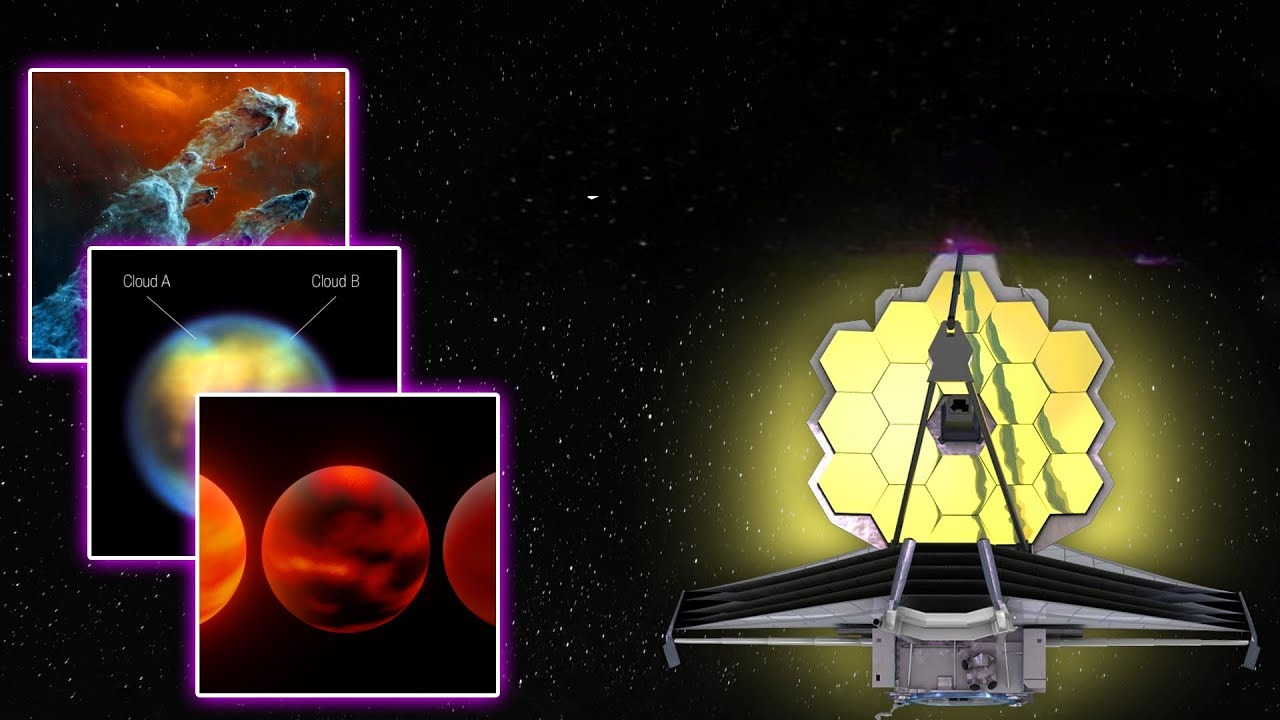
We humans have always been fascinated and puzzled by the vast and infinite expanse of space.
We have always wondered if we are truly alone in the universe and what secrets lie beyond our own planet.
Furthermore, researchers have made a truly remarkable discovery: thousands of messages are being sent to us by a single, massive space source.
However, what might it be?
Is it a natural occurrence or something else entirely?
Scientists are left with more questions than answers due to the unprecedented scale and consistency of the messages.
Could this be evidence of intelligent life elsewhere in the universe?
And if that’s the case, what are they trying to tell us?
The scientific community is abuzz with anticipation as they investigate the possibilities and attempt to decipher the mystery of these space messages.
So, come watch today’s video with us as we go into the specifics of how scientists recently discovered a huge spacecraft that continuously sends thousands of messages.
Do you know what fast radio burst (frb) is?
It has captivated astronomers, scientists, and space enthusiasts despite the fact that it may appear to some to be an uninteresting phenomenon.
Because so much remains unknown about it, its enigmatic nature contributes to its appeal.
Imagine how excited scientists were when they began to detect multiple frb signals in a short amount of time and they continued to do so.
There are many mysteries in space, and one of the most puzzling is frb.
We are left wondering: who or what is attempting to pique our interest, and what might they want from us?
However, what exactly is frb?
Frbs are brief, intense, and only millisecond-long bursts of radio emission.
They have the dispersion sweep that radio pulsars are known for.
Dr. discovered the first instance of frb.
Duncan Lorimer discovered frbs in 2007 but, after looking at archive data, researchers discovered that a pulsar survey of the magellanic clouds around six years before that.
It should come as no surprise that the frb is also known as the lorimer burst.
Researchers pay close attention to a characteristic known as dispersion when telescopes capture an FRB. Dispersion measures how spread out an FRB is by the time it reaches Earth.
Plasma, a soup of charged particles, fills the space between stars and galaxies rather than being empty in the vastness of space.
Light encounters a variety of obstacles as it travels through space, which can affect its course.
Plasma is one of these obstacles.
This plasma has the ability to slow down light, including radio waves.
It’s interesting to note that lower frequency radio waves are slowed down and affected more than higher frequency ones.
There are a number of frequencies in a fast radio burst, and the dispersion effect occurs when the higher frequencies reach Earth first.
This dispersion is used by scientists to estimate how far away the frb source is from Earth.
The greater the dispersion, the more plasma the signal has passed through, implying a greater distance from the source.
The first frb, which was located close to the small magellanic cloud and resembled enormous pulses from radio pulsars, was found.
However, the signal’s flux could not be precisely measured because of the limited instrumentation.
The first frb could occur in several hundred bursts every day, according to the researchers, with a low probability of detection.
Because it only occurred in three of the 13 beams of the Parkes multi-beam receiver when the first frb was discovered, scientists thought it to be a one-of-a-kind phenomenon.
However, a few years later, a student by the name of Sarah Burke-Spolaor discovered another burst with a dispersion that was nearly identical to that of the Lorimer burst, which rekindled interest in the subject.
Thornton and colleagues discovered four more lorimer bursts in 2013, giving them the official name fast radio bursts (frbs).
The parkes 64-meter radio telescope’s high time resolution universe surveys revealed these bursts, which had significantly higher dispersion measures than the original lorimer burst.
Similar to what we would anticipate from extraterrestrial radio emission sources, the brightest burst displayed scatter broadening with power law dependencies.
The first frb discovered in another observatory was announced in 2014; however, the origin of the frb remains contentious, and researchers are still attempting to determine its identity.
With advancements in technology and research methods, we may get closer to understanding these mysterious bursts and their origins. It is a perplexing mystery that researchers are eager to solve.
The plot is about to get even more complicated, so hold on to your hats, folks!
In 2019, researchers discovered something that would leave even the most seasoned astronomer speechless after delving deeply into their data.
The investigation revealed that the frb121102 source produced a staggering 1652 flares in just 47 days, breaking the previous record for the most flares ever discovered from a frb!
Researchers scrambled to find any kind of regularity or periodicity in the bursts as this new information opened up an entirely new world of possibilities.
Sadly, their efforts were fruitless because they were unable to identify any patterns.
The lack of periodicity made it extremely challenging for the researchers to identify the burst’s origin, which was a real head-scratcher for them.
They acknowledged that it may be a while before we truly comprehend the mysteries of frbs and were left wondering whether these flares could be produced by multiple mechanisms.
Even worse, the majority of frb sources only flare once and then vanish, making it even more difficult for scientists to predict or locate them.
One of the most active frbs, frb121102, is one of a small number of the frbs that have been known to emit signals on a consistent basis.
Scientists have been able to follow this bizarre object all the way to a dwarf galaxy 3 billion light-years away, but it’s not your typical frb.
It is extremely crowded and follows a singular pattern: It then goes through 67 days of silence after 90 days of activity.
The 500-meter aperture spherical radio telescope, or fast for short, has been one of the tools that has helped astronomers observe frb121102 when it is emitting due to the amount of activity it has experienced.
FRBs were detected by the telescope even during its testing phase.
In just 47 days, fast gathered a staggering 59 and a half hours of data in just two months.
The highest level of activity ever observed in a frb source was the peak rate of 122 bursts in just one hour.
The researchers were able to conduct a statistical analysis of the source’s activity as a result of this enormous collection of data.
The bursts were categorized as follows: those with a higher energy and those with a lower energy, whose properties were distinct from one another.
It was demonstrated that the weaker bursts were more unpredictable.
Scientists are still determined to locate frbs despite their lack of regularity.
They have learned through their research that these bursts come from galaxies millions or even billions of light years away but produce enough energy in a very short time to power hundreds of millions of suns.
The researchers have recently discovered yet another fascinating frog: frb190520, which was found in China by the fast telescope.
With 75 bursts released in just six months, this frb stands out because it repeats itself more frequently than others.
The team focused on the frb using the powerful very large array radio telescope in New Mexico, curious to learn more.
They finally found the source of this baffling signal, which came from a dwarf galaxy about 3 billion light years from us.
When the researchers discovered a weak radio signal that came from the same location as frb190520, they made an unexpected discovery.
There is only one other frb source known to possess this persistent signal, making it a rare find.
The researchers were able to determine frb190520’s distance from Earth by using the location of the dwarf galaxy from which it originated.
However, an odd discrepancy was revealed in their results: Based on the frb’s dispersion, a distance of 30 billion light years was calculated, which is ten times greater than the actual distance, which is 3 billion light years.
While this is remarkable and puzzling, it is important to note that only 19 of the more than 800 discovered frbs have been able to be located, allowing for precise distance estimates.
Astronomers must rely on dispersion to determine their distance from Earth for the remaining sources.
This new frb, which raises more questions than it answers, has captivated the scientific community.
The dispersion method used on this one was way off the mark, in contrast to the 19 other frbs, whose estimated distances were similar to their actual locations.
Scientists are baffled and have no choice but to wonder: What causes persistent radio signals, and are they becoming more common?
Is the persistent radio signal also caused by the same mechanism that causes frbs?
Additionally, the unusually high dispersion rate of frb190520 surprised the group.
Is it connected to the frb itself or was it brought on by something nearby?
Using a variety of telescopes located all over the world, the team is determined to learn more about this strange object.
We may eventually be able to solve the mysteries surrounding frbs with additional discoveries, paving the way for a deeper comprehension of these peculiar objects in our galaxy.
In conclusion, astronomers and the general public alike have become interested in the fascinating and mysterious cosmic phenomenon known as fast radio bursts.
There is still a lot that we do not know about these bursts of radio energy, despite significant progress made in recent years, such as the detection of more than 800 frbs and the tracing of some of them to their sources.
The more we learn about frbs, the more questions we have, from the unexpected dispersion estimates to the discovery of persistent radio signals.
However, we can hope to learn more about these strange objects and gain a deeper comprehension of our universe by utilizing cutting-edge technology and working together with scientists from all over the world.







